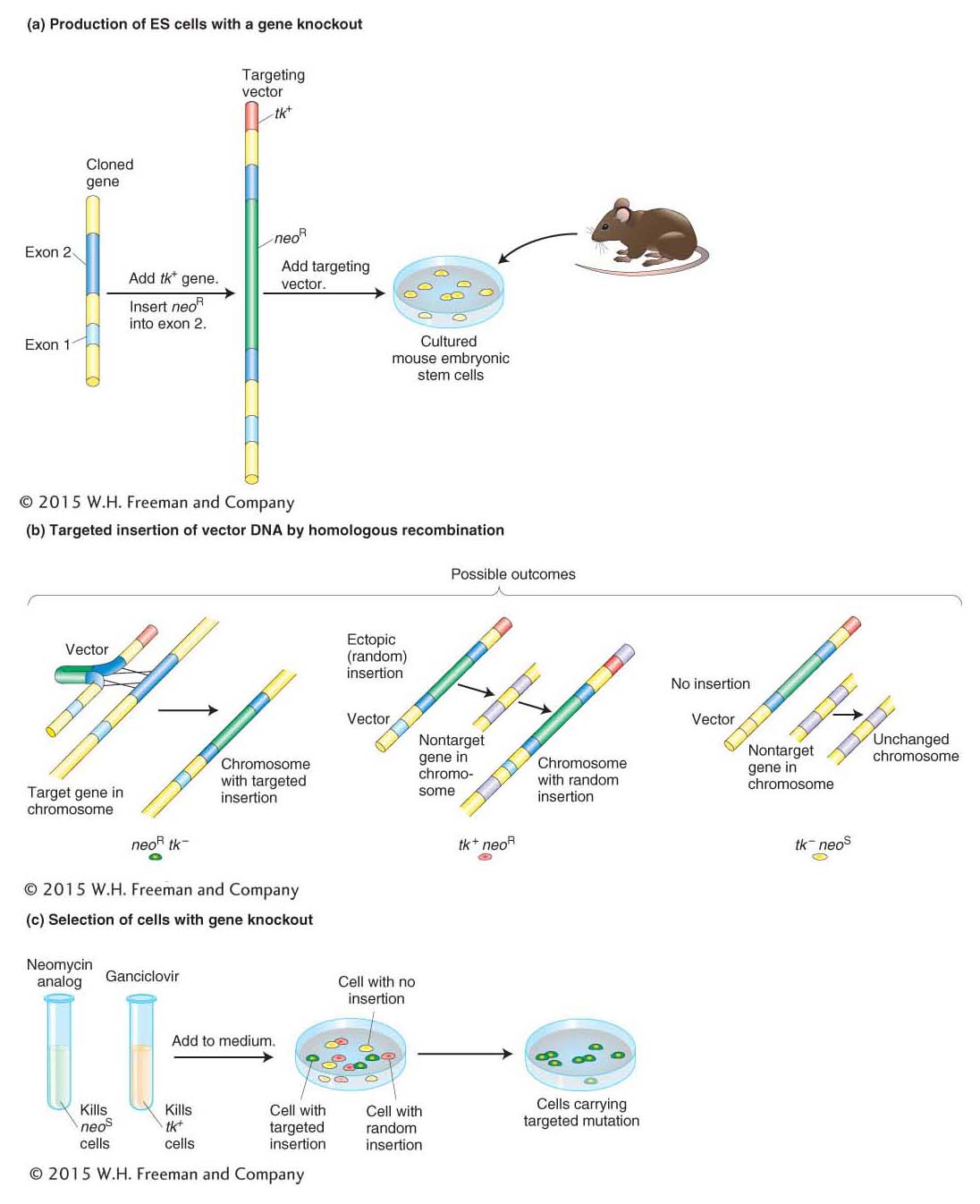Producing cells containing a targeted gene knockout

Figure 10-29: Producing cells that contain a mutation in one specific gene, known as a targeted mutation or a gene knockout. (a) Copies of a cloned gene are altered in vitro to produce the targeting vector. The gene shown here was inactivated by the insertion of the neomycin- resistance gene (neoR) into a protein- coding region (exon 2) of the gene and had been inserted into a vector. The neoR gene will serve later as a marker to indicate that the vector DNA took up residence in a chromosome. The vector was also engineered to carry a second marker at one end: the herpes tk gene. These markers are standard, but others could be used instead. When a vector, with its dual markers, is complete, it is introduced into cells isolated from a mouse embryo. (b) When homologous recombination occurs (left), the homologous regions on the vector, together with any DNA in between but excluding the marker at the tip, take the place of the original gene. This event is important because the vector sequences serve as a useful tag for detecting the presence of this mutant gene. In many cells, though, the full vector (complete with the extra marker at the tip) inserts ectopically (middle) or does not become integrated at all (right). (c) To isolate cells carrying a targeted mutation, all the cells are put into a medium containing selected drugs— here, a neomycin analog (G418) and ganciclovir. G418 is lethal to cells unless they carry a functional neoR gene, and so it eliminates cells in which no integration of vector DNA has taken place (yellow). Meanwhile, ganciclovir kills any cells that harbor the tk gene, thereby eliminating cells bearing a randomly integrated vector (red). Consequently, virtually the only cells that survive and proliferate are those harboring the targeted insertion (green).
[Leave] [Close]